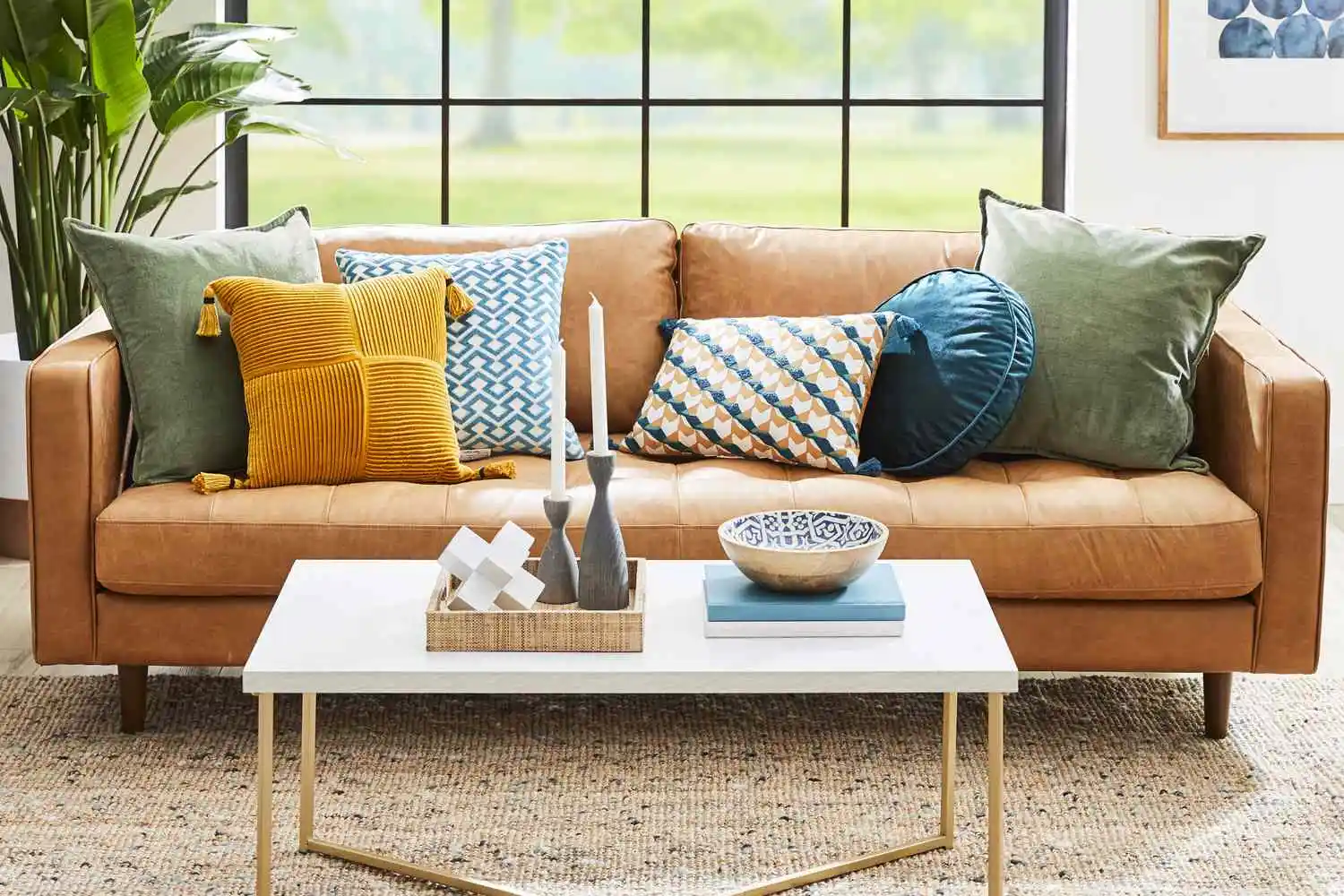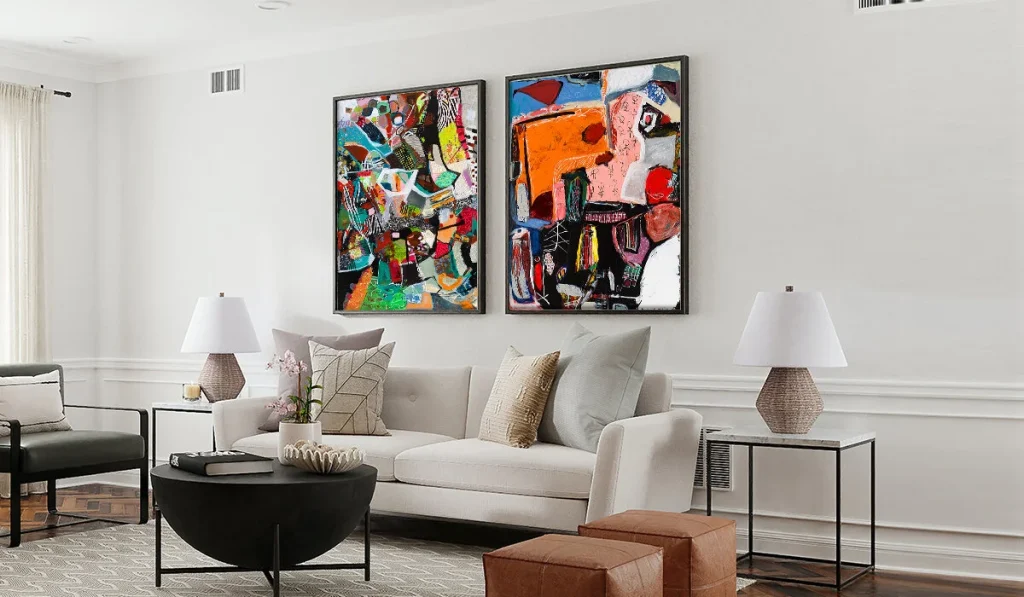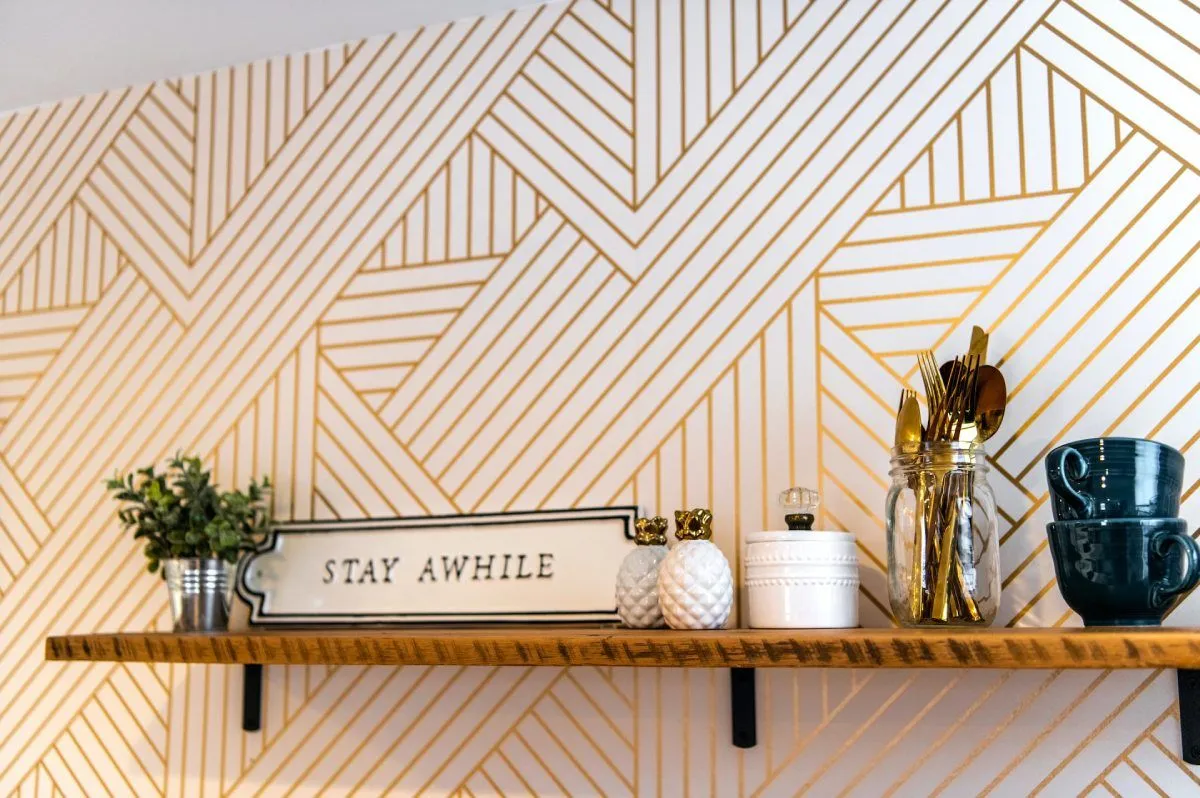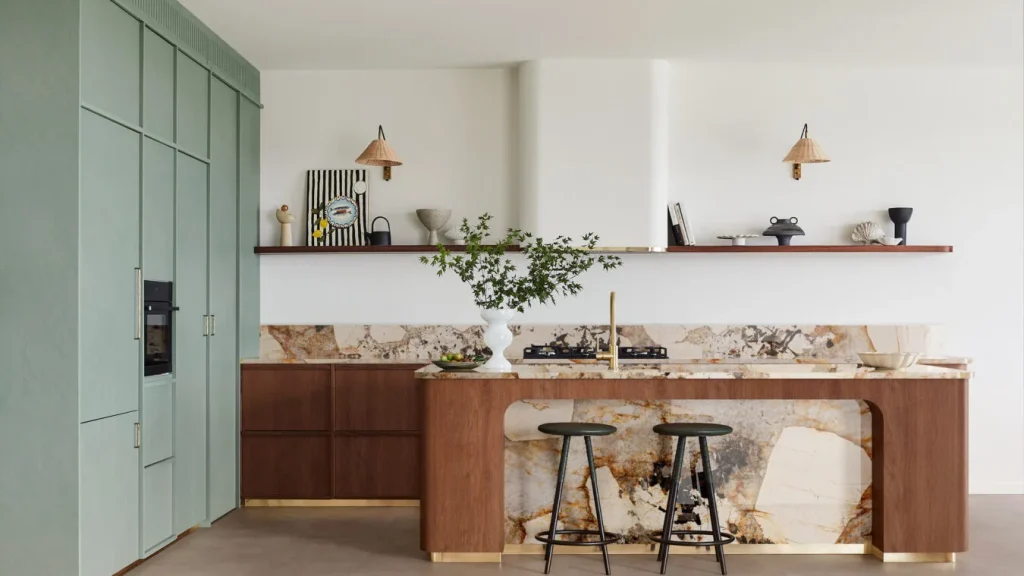How to Mix and Match Patterns Like a Pro
Mixing and matching patterns in home decor can transform a space, adding vibrancy, personality, and depth. However, it can also be intimidating, as there’s a fine line between a harmonious blend and a chaotic clash. Mastering the art of combining patterns requires an understanding of color, scale, and balance. This comprehensive guide will walk you through the principles and techniques to help you mix and match patterns like a pro, creating stunning and cohesive interiors.
Understanding Patterns in Home Decor
Patterns are repetitive designs that can vary in complexity, scale, and color. They are found in fabrics, wallpapers, rugs, and decorative accessories. The key to successfully mixing patterns lies in understanding their different elements and how they interact with each other.
Types of Patterns
- Geometric Patterns: These include shapes like squares, circles, triangles, and other regular forms. Examples are stripes, chevrons, and polka dots.
- Floral Patterns: These patterns feature flowers, leaves, and other botanical elements. They can range from small, delicate designs to large, bold prints.
- Abstract Patterns: These are non-representational designs that don’t follow a specific form. They can be swirls, splatters, or other artistic expressions.
- Animal Prints: These mimic the patterns found on animals, such as leopard spots, zebra stripes, and snake skin.
- Plaid and Checks: These patterns feature intersecting lines that form squares or rectangles. They can vary in size and complexity.
- Ethnic and Tribal Patterns: These include designs inspired by traditional textiles from various cultures, such as ikat, kilim, and batik.
- Damask and Brocade: These are intricate, often symmetrical patterns that have a luxurious, classic feel.
Key Elements of Patterns
- Scale: The size of the pattern. Large-scale patterns make a bold statement, while small-scale patterns are more subtle and can serve as a backdrop.
- Color: The color palette of the pattern. Harmonizing colors is crucial to ensure patterns complement rather than clash.
- Repetition: The frequency and regularity of the pattern’s repetition. Regular patterns create order, while irregular patterns add interest and movement.
Principles of Mixing and Matching Patterns
To mix and match patterns effectively, consider the following principles:
1. Start with a Color Palette
A cohesive color palette is the foundation of successful pattern mixing. Choose a color scheme that will unify the different patterns. Here’s how to do it:
- Choose a Base Color: Select a dominant color that will serve as the anchor for your palette.
- Add Complementary Colors: Choose colors that complement the base color. These can be different shades of the same color or contrasting colors that work well together.
- Include Neutral Colors: Neutrals like white, gray, and beige can balance and tone down bold patterns.
2. Vary the Scale
Mixing patterns of different scales creates visual interest and balance. Here’s how to vary scale effectively:
- Large-Scale Patterns: Use these as focal points. They can be featured on larger items like rugs, curtains, or statement furniture pieces.
- Medium-Scale Patterns: These can complement the large-scale patterns and are versatile for use on cushions, throws, and smaller furniture.
- Small-Scale Patterns: These are great for accessories and can serve as background patterns that add texture without overwhelming the space.
3. Balance Bold and Subtle Patterns
Balancing bold and subtle patterns ensures that no single element overwhelms the room. Here’s how to achieve this balance:
- Bold Patterns: Use bold patterns sparingly to create focal points and add drama. They work well on feature walls, statement furniture, and large rugs.
- Subtle Patterns: These can fill in the gaps and provide a background that doesn’t compete with the bold patterns. Subtle patterns work well on smaller accessories and secondary surfaces.
4. Consider Pattern Density
Pattern density refers to how busy or dense a pattern looks. Combining patterns with different densities can create a harmonious look. Here’s how to manage pattern density:
- Dense Patterns: These patterns have closely packed elements and can be visually intense. Use them in moderation to avoid overwhelming the space.
- Sparse Patterns: These have more space between elements and appear less busy. They can help balance denser patterns and provide breathing room.
5. Maintain Consistency in Style
While mixing patterns, maintaining a consistent style helps create a cohesive look. For example, mixing modern geometric patterns with traditional floral patterns can work if they share a common color palette or complementary scale. However, mixing too many different styles can result in a disjointed look.
Step-by-Step Guide to Mixing and Matching Patterns
Now that we’ve covered the principles, let’s dive into a step-by-step guide to mixing and matching patterns like a pro.
Step 1: Choose a Dominant Pattern
Start with a dominant pattern that will set the tone for the room. This could be a large-scale floral pattern on a rug, a bold geometric wallpaper, or a statement piece of furniture. The dominant pattern should be eye-catching and serve as the focal point of the room.
Step 2: Select Supporting Patterns
Once you have your dominant pattern, choose supporting patterns that complement it. These patterns should vary in scale and density to create balance. For example, if your dominant pattern is a large-scale floral, you could choose a medium-scale geometric and a small-scale stripe as supporting patterns.
Step 3: Coordinate Colors
Ensure that the colors in your supporting patterns coordinate with the dominant pattern. Use the color palette you established earlier to guide your choices. You can use a color wheel to find complementary colors and ensure harmony.
Step 4: Distribute Patterns Evenly
Distribute patterns evenly throughout the room to create a cohesive look. Avoid clustering all patterns in one area, as this can create an unbalanced and chaotic appearance. Spread patterns across different elements, such as upholstery, cushions, curtains, and accessories.
Step 5: Incorporate Solid Colors
Incorporate solid colors to give the eye a place to rest and prevent the space from feeling too busy. Solid colors can be used on walls, larger furniture pieces, and other substantial surfaces. They help ground the patterns and create a balanced look.
Step 6: Add Texture
Textures can add another layer of interest and depth to your pattern mix. Consider using textured fabrics, rugs, and accessories to complement your patterns. Textures can add warmth and dimension, making the space feel more inviting.
Step 7: Experiment and Adjust
Mixing and matching patterns is an art, and it often requires some experimentation. Don’t be afraid to try different combinations and adjust as needed. Step back and assess the overall look, making changes until you achieve the desired balance and harmony.
Room-by-Room Guide to Mixing Patterns
Let’s explore how to apply these principles to different rooms in your home.
Living Room
The living room is a versatile space where you can experiment with patterns on various elements.
- Sofa and Cushions: Start with a patterned sofa or a solid sofa with patterned cushions. Mix large-scale floral cushions with small-scale geometric or striped cushions.
- Rug: A large patterned rug can anchor the room. Choose a rug with a bold pattern if the furniture is more subtle, or a more subdued pattern if the furniture is bold.
- Curtains: Patterned curtains can add height and interest. Coordinate them with the cushions and rug to create a cohesive look.
- Accessories: Add patterned accessories like throws, vases, and artwork to tie the room together.
Bedroom
In the bedroom, patterns can create a cozy and inviting atmosphere.
- Bedding: Use patterned bedding as the focal point. Mix a large-scale duvet cover with smaller-scale patterned pillows and throws.
- Headboard: A patterned headboard can add a statement. Choose a pattern that complements the bedding.
- Rug: A patterned rug at the foot of the bed can add warmth and interest.
- Walls: Consider patterned wallpaper on one wall or patterned artwork to add depth.
Kitchen
The kitchen is a functional space, but patterns can add style and personality.
- Backsplash: A patterned backsplash can be a focal point. Choose tiles with geometric or mosaic patterns.
- Curtains and Blinds: Patterned curtains or blinds can add color and interest to the kitchen.
- Accessories: Use patterned dish towels, rugs, and tablecloths to incorporate patterns in smaller doses.
- Dishes and Utensils: Patterned dishes, mugs, and utensils can add a fun and cohesive element.
Bathroom
Patterns in the bathroom can make the space feel luxurious and inviting.
- Tiles: Use patterned tiles on the floor or in the shower area. Geometric or mosaic patterns work well.
- Shower Curtain: A patterned shower curtain can add a bold statement. Choose a pattern that complements the tiles.
- Towels: Patterned towels can add a touch of luxury. Mix and match different scales and densities.
- Accessories: Add patterned accessories like rugs, soap dispensers, and storage baskets to tie the room together.
Dining Room
The dining room is a great place to play with patterns on textiles and accessories.
- Tablecloth and Runners: Use a patterned tablecloth or runner as the focal point. Mix with solid placemats or vice versa.
- Chair Cushions: Patterned chair cushions can add comfort and style. Coordinate with the tablecloth or runner.
- Rug: A patterned rug under the dining table can anchor the space and add warmth.
- Dishes and Glassware: Patterned dishes and glassware can add a cohesive and stylish touch to the dining table.
Common Mistakes to Avoid
While mixing and matching patterns, there are some common mistakes to avoid:
1. Overloading with Patterns
Using too many patterns can make a space feel chaotic. Stick to a maximum of three to four patterns in a room to maintain balance and cohesion.
2. Ignoring Scale
Ignoring the scale of patterns can lead to a visually jarring look. Ensure you vary the scale of patterns to create a harmonious blend.
3. Clashing Colors
Mixing patterns with clashing colors can create a disjointed look. Stick to a cohesive color palette to ensure harmony.
4. Neglecting Solids
Neglecting solid colors can make a space feel too busy. Use solid colors to give the eye a place to rest and balance the patterns.
5. Inconsistent Style
Mixing patterns from completely different styles can create a disjointed look. Ensure the patterns share a common style or theme to maintain cohesion.
Advanced Techniques for Pattern Mixing
For those looking to take their pattern mixing to the next level, here are some advanced techniques to consider:
1. Layering Patterns
Layering involves combining multiple patterns in a single element, such as a layered bedding setup with a patterned duvet, sheets, and cushions. This technique adds depth and complexity to the design.
2. Mixing Styles
Mixing patterns from different styles, such as combining traditional floral with modern geometric, can create a unique and eclectic look. Ensure there is a unifying element, like color, to maintain cohesion.
3. Using Patterned Artwork
Incorporate patterned artwork to add another layer of interest. Choose artwork that complements the existing patterns and color palette.
4. Creating Visual Pathways
Use patterns to create visual pathways and guide the eye through the space. For example, a patterned rug can lead to a patterned cushion, creating a cohesive visual journey.
5. Experimenting with Monochromatic Patterns
Mix patterns in a monochromatic color scheme for a sophisticated and subtle look. Vary the scales and densities to add interest without overwhelming the space.
Conclusion
Mastering the art of mixing and matching patterns can transform your home into a vibrant, dynamic, and cohesive space. By understanding the principles of color, scale, and balance, and by following a step-by-step approach, you can create stunning interiors that reflect your personality and style. Whether you’re a beginner or an advanced decorator, these tips and techniques will help you mix and match patterns like a pro, creating a home that is both beautiful and inviting.
Experiment with different combinations, trust your instincts, and most importantly, have fun with the process. With a little practice and creativity, you’ll be able to create a harmonious and visually appealing space that you’ll love to live in.



